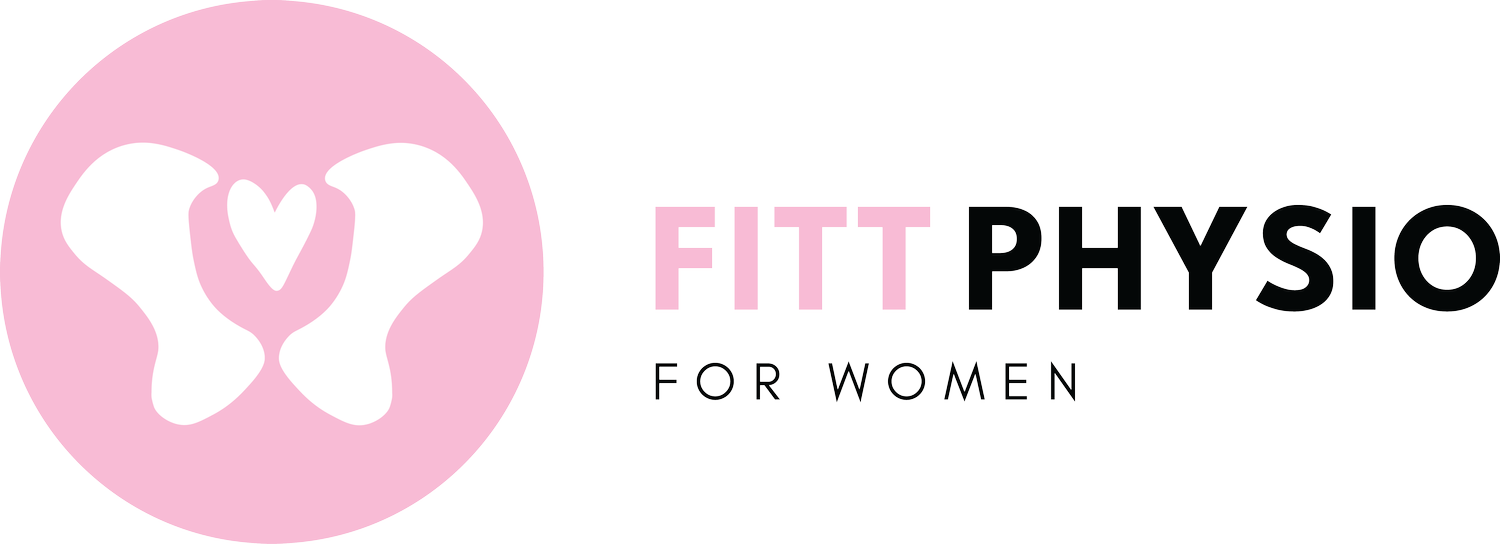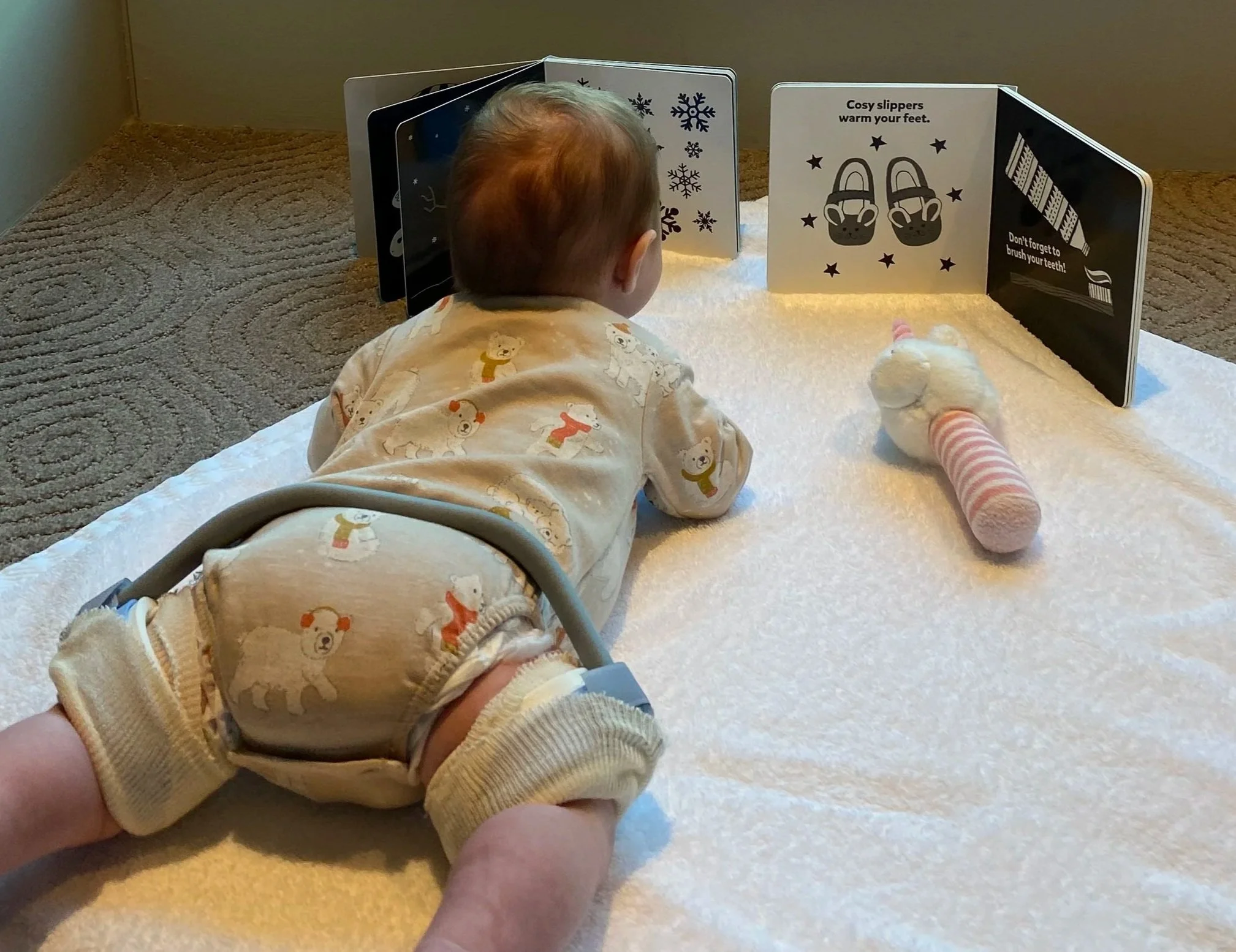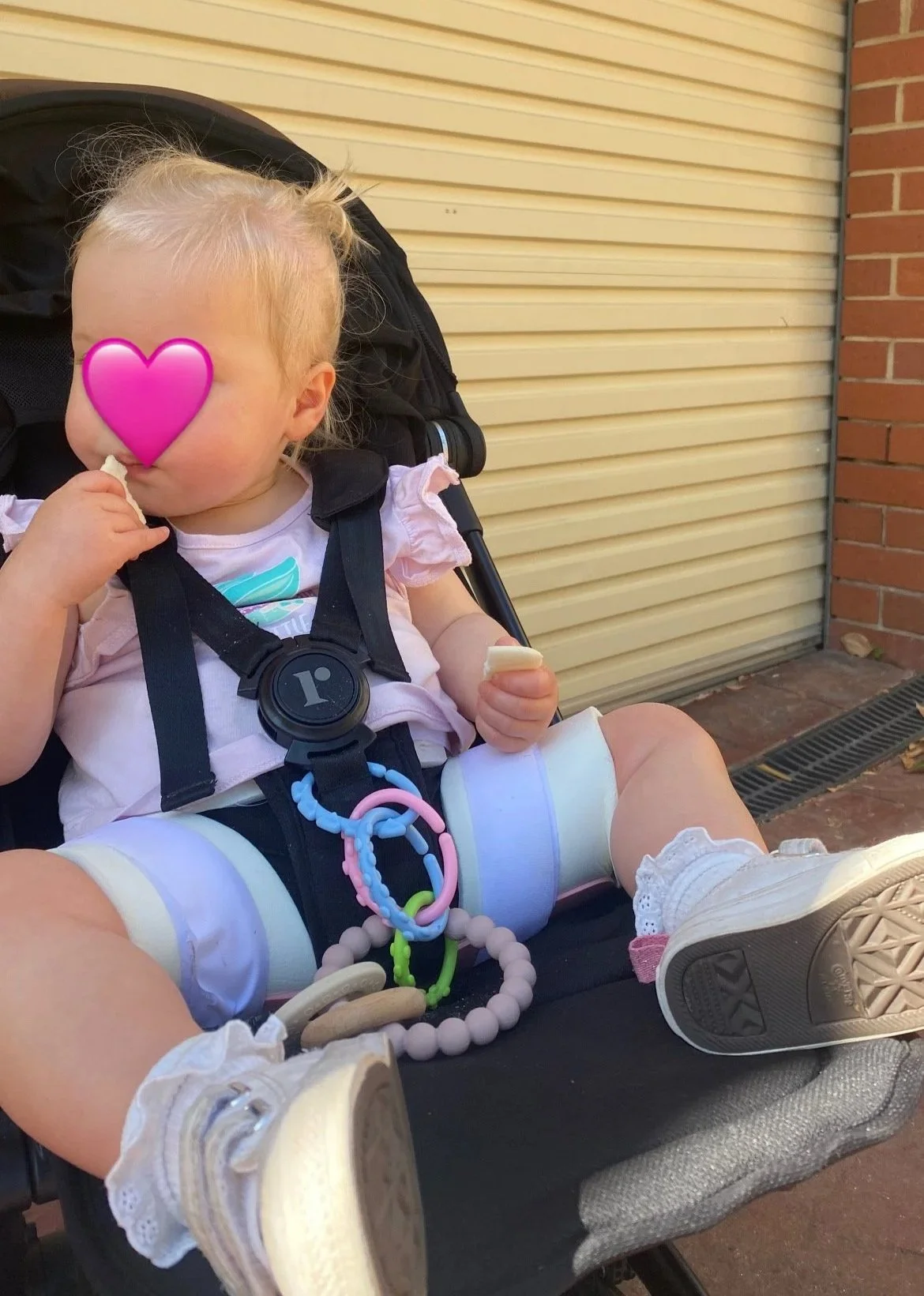Our Hip Dysplasia Journey with our first baby.
You never expect to face complications with your baby’s health and development, especially so early on. Developmental dysplasia of the hip (DDH) is surprisingly common, but I never imagined it would be part of our parenting story. Here’s how our journey unfolded, starting all the way back in pregnancy.
Pregnancy and Breech Position
At 28 weeks pregnant, during a routine appointment at my obstetrician’s clinic, my midwife mentioned that our baby was in a breech position. While there was still plenty of time for her to turn, however in our case she remained breech until birth.
I had already planned an elective caesarean for personal reasons, so her position didn’t really affect our birth plans (apart from ruling out a maternal-assisted caesarean). Around 33–34 weeks, with no change in position, I considered trying Spinning Babies techniques. But after discussing with my healthcare team and doing my own research, I decided to let her be. Sure enough, she stayed wedged in breech.
What I didn’t fully appreciate at the time was that breech presentation is a known risk factor for hip dysplasia. Even though I was aware of this, I naively assumed she wouldn’t have it since we had no family history.
The First Checks and Diagnosis
A day or two after her birth, our daughter had her hips examined by her paediatrician. Thankfully, her physical assessment was normal. Still, we were referred for a routine ultrasound at 6–7 weeks, just because she had been breech.
Over those early weeks, her hips were checked regularly by our maternal child health nurse, GP, and paediatrician, and everything continued to feel reassuringly normal.
Then came our first ultrasound at Monash Children’s Hospital in Victoria. It was a shock: she was diagnosed with mild dysplasia in her left hip and moderate dysplasia in her right.
Risk Factors for Hip Dysplasia
Here are the main risk factors we learned about:
✅ First baby
✅ Female
✅ Breech in pregnancy
✅ Family history
Since her right hip was moderately affected, we decided to get a second opinion from a private paediatric orthopaedic doctor.
Starting Treatment
At around 9 weeks old, she had a repeat ultrasound. The left hip had resolved on its own, but the right was unchanged. Our doctor recommended bracing.
She was fitted with a Denis-Browne Bar brace immediately. It was confronting and emotional, but she adapted incredibly well—no problems with sleep or daily routines.
The plan was to brace her for 12 weeks, with an ultrasound at 6 weeks and check-ins every 2 weeks to adjust the brace as she grew.
Tips for Bracing Early (Under 6 Months)
Here are some things that helped us:
Car Seat: Remove the padding so the brace fits better. As the brace widens over time, you might have to take it off for car trips. Eventually, we were allowed up to 3 hours per day out of the brace, which we used for travel.
Clothing: Size up! We found Cotton On ribbed onesies/pants and Bonds wondersuits worked best—stretchy and comfortable under the brace.
Sleeping Bags: Consider upsizing if needed for extra room. We preferred this rather then purchasing one designed specifically for hip dysplasia.
First Year Follow-Up
After 12 weeks, her hip dysplasia resolved. We were so relieved! Her doctor recommended a routine review around her first birthday to check development.
Leading up to that follow-up, we noticed no issues. She was active, walking, and meeting her milestones.
When Hip Dysplasia Returned
Close to her first birthday, she had an X-ray. We were shocked: both hips showed signs of dysplasia again.
Our doctor suggested a wait-and-see approach. A repeat X-ray 3 months later showed improvement but still dysplasia. At 18 months, the development plateaued.
This meant bracing again, this time in a Rhino brace, 23 hours a day for 6 months.
I was devastated. I cried in the waiting room as we waited for the fitting. But toddlers are resilient, she immediately began relearning how to pull up and walk.
Challenges and Adaptations
Adjusting to bracing a toddler brought unexpected obstacles:
Car Seat
Our usual Britax Graphene didn’t fit with the brace. We hired a car seat for 6 months from a Melbourne company (Baby Capsule Hire), which made outings possible without using her precious 1-hour brace-free time. Those first two weeks waiting for delivery were isolating, but support from friends and visitors helped.
Sleeping Bag
I learned (the hard way) that hip dysplasia sleeping bags are mostly online-only. Thankfully, staff at Baby Bunting helped me size up to something that worked. We ended up using a Love to Dream Sleep Suit - Size 2.
High Chair
We modified our Stokke Tripp Trapp by removing the tray and baby attachments, using a strap to keep her safely seated. It wasn’t perfect, but it worked.
Pram
Our everyday pram was too deep for her brace. Luckily, our travel pram fit her, even if it wasn’t ideal for long walks.
Carrier
My go-to solution for getting around comfortably, I used the Ergobaby Omni 360 (Amazon often have them on sale and Baby Bunting price match!).
Clothing Tips for Toddlers in Braces
Summer: We sized up two sizes in shorts (from size 1 to size 3) so they’d fit under the brace. We also put her in shorts over her bathers to protect her legs from the brace ‘rubbing’.
Cooler Months: One size up in leggings was perfect.
Navigating Social Situations
One of the hardest parts was how the brace slowed her down. Sometimes, it felt like we were left out when friends planned activities like bike riding or swimming. Looking back, it seems small, but in the moment, it was overwhelming.
Final Thoughts
Facing developmental hip dysplasia with your baby or toddler is hard. It’s emotional. It requires adjustments you never imagined, but please know you’re not alone. Your child’s resilience will inspire you every day. I hope sharing our journey helps you feel more prepared, less alone, and empowered to advocate for your little one ❤️




